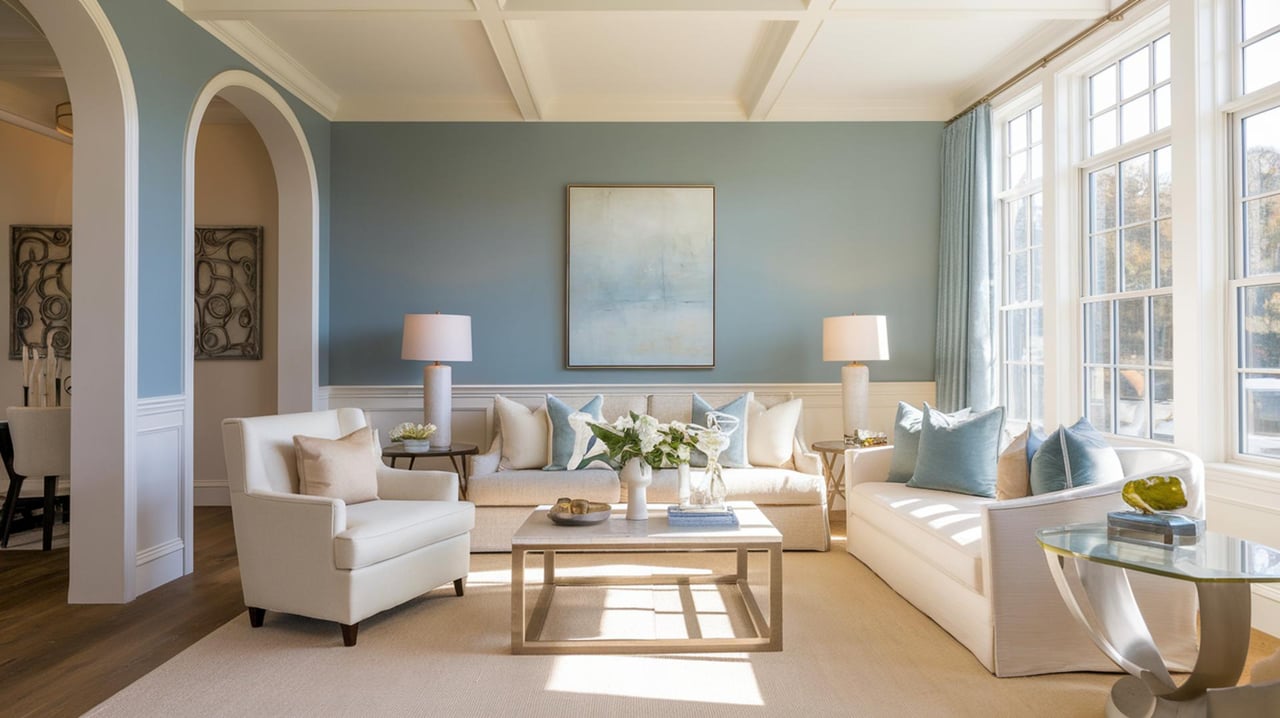Choosing the perfect paint tones for a room is an art that combines personal taste with design principles. The right color can transform a space, creating an atmosphere that reflects personality and style. Whether you're looking to refresh a single room or revamp your entire home, understanding how to select the ideal paint tones is essential. This process involves considering various factors such as lighting, room size, and existing decor. By mastering the art of color selection, you can create a cohesive and inviting environment that enhances your living space.
Understanding Color Psychology
Color psychology plays a significant role in how a room feels and functions. Each color evokes different emotions and can influence mood and behavior. For instance, blues and greens are often associated with calmness and relaxation, making them ideal for bedrooms and bathrooms. In contrast, warm colors like reds and oranges can energize a space, making them suitable for living rooms or dining areas. Understanding these psychological effects can help in selecting colors that align with the intended purpose of the room. Consider how you want to feel in the space and choose colors that support that emotion.
Assessing Natural and Artificial Lighting
Lighting dramatically affects how paint colors appear in a room. Natural light can change throughout the day, altering the perception of color. A north-facing room may have cooler light, which can make colors appear more muted, while a south-facing room may have warmer light, enhancing the vibrancy of colors. Artificial lighting also plays a role, as different types of bulbs can cast varying shades of light. Incandescent bulbs tend to emit a warm glow, while LED lights can range from cool to warm tones. Testing paint samples in different lighting conditions can provide a clearer idea of how the color will look at various times of the day.
Considering Room Size and Function
The size and function of a room should influence color choices. Lighter colors can make a small room feel larger and more open, while darker shades can create a cozy, intimate atmosphere. For multifunctional spaces, using different tones of the same color can help delineate areas without disrupting the overall flow. For example, a home office within a living room might benefit from a slightly darker shade to create a sense of separation. Consider how the room is used and choose colors that enhance its functionality.
Harmonizing with Existing Decor
When selecting paint tones, it's important to consider the existing decor and furnishings. The color of your walls should complement the furniture, flooring, and accessories in the room. A cohesive color scheme can tie the space together, creating a harmonious look. If your furniture is neutral, you have more flexibility to experiment with bold wall colors. Conversely, if your furnishings are colorful, a more subdued wall color might be preferable to avoid visual clutter. Creating a mood board with fabric swatches and paint samples can help visualize how different elements will work together.
Testing Paint Samples
Before committing to a color, testing paint samples is a crucial step. Paint small sections of the wall with different shades and observe how they look at various times of the day. This process allows you to see how the colors interact with the room's lighting and other elements. It's also helpful to test colors on different walls, as shadows and light can vary within the same room. Taking the time to test samples can prevent costly mistakes and ensure satisfaction with the final result.
Exploring Color Trends
While personal preference should always be the primary guide, exploring current color trends can provide inspiration and ideas. Trends can introduce new color combinations and innovative ways to use paint in a space. However, it's important to choose trends that resonate with your style and will stand the test of time. Incorporating trendy colors through accents and accessories can be a more flexible approach, allowing for easy updates as trends evolve.
Using Accent Walls for Impact
Accent walls are an effective way to introduce bold colors without overwhelming a space. By painting one wall in a contrasting or complementary color, you can create a focal point that adds depth and interest. Accent walls work well in living rooms, bedrooms, and even kitchens, providing an opportunity to experiment with color in a controlled way. When choosing an accent wall, consider the room's layout and select a wall that naturally draws attention, such as one with a fireplace or large window.
Balancing Neutrals and Bold Colors
Balancing neutrals with bold colors can create a dynamic and visually appealing space. Neutrals like whites, grays, and beiges provide a versatile backdrop that allows bold colors to shine. This balance can be achieved by using bold colors in smaller doses, such as on an accent wall or through accessories like pillows and artwork. The key is to ensure that the overall color scheme feels cohesive and intentional, with each color playing a specific role in the design.
Incorporating Texture and Finish
The texture and finish of paint can affect the overall look and feel of a room. Matte finishes offer a soft, sophisticated appearance, while glossy finishes can add a sense of luxury and reflect light. Textured paints, such as those with a suede or metallic finish, can add depth and interest to walls. Consider the desired aesthetic and function of the room when selecting paint finishes. For high-traffic areas, a more durable finish like satin or semi-gloss may be preferable for its ease of cleaning.
Seeking Professional Advice
For those unsure about choosing the right paint tones, seeking professional advice can be invaluable. Interior designers and color consultants have expertise in color theory and can provide personalized recommendations based on your space and preferences. They can offer insights into color combinations, lighting considerations, and the latest trends, helping to create a cohesive and stylish look. Engaging a professional can save time and ensure that the final result aligns with your vision for the space.
Transform Your Space with the Right Colors
Choosing the perfect paint tones can truly transform your home, making it feel more inviting and reflective of your personal style. With the right colors, each room can become a harmonious part of your living space. Don't hesitate to experiment and let your creativity shine. For expert advice and personalized guidance, reach out to Yadlynd Cherubin to help you master your palette and achieve the perfect look for your home.



